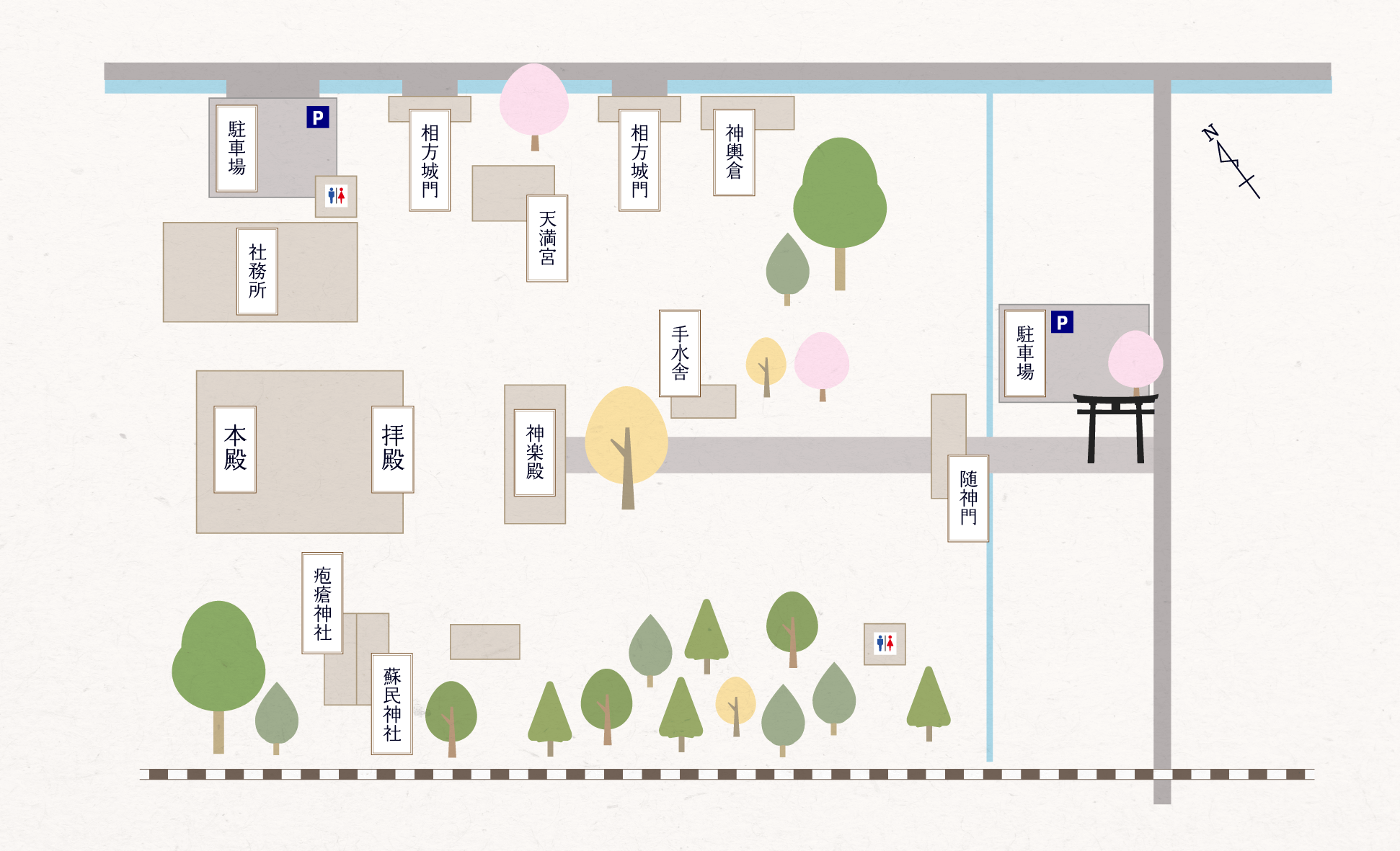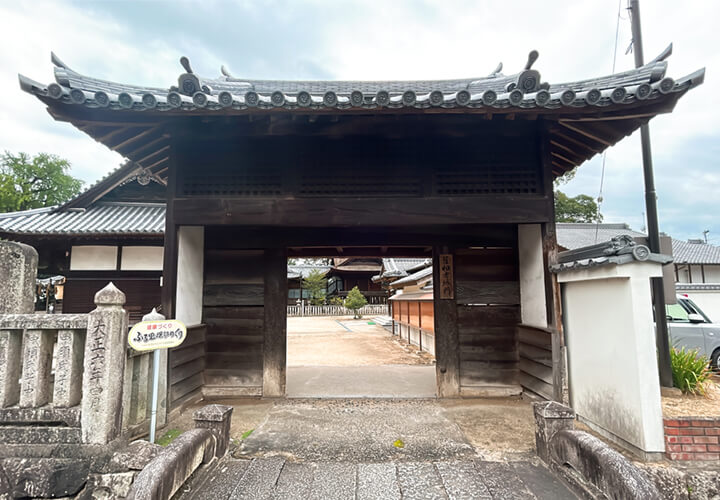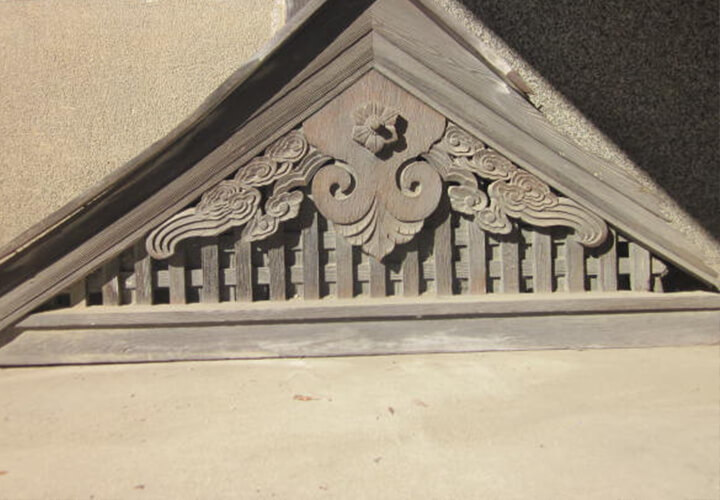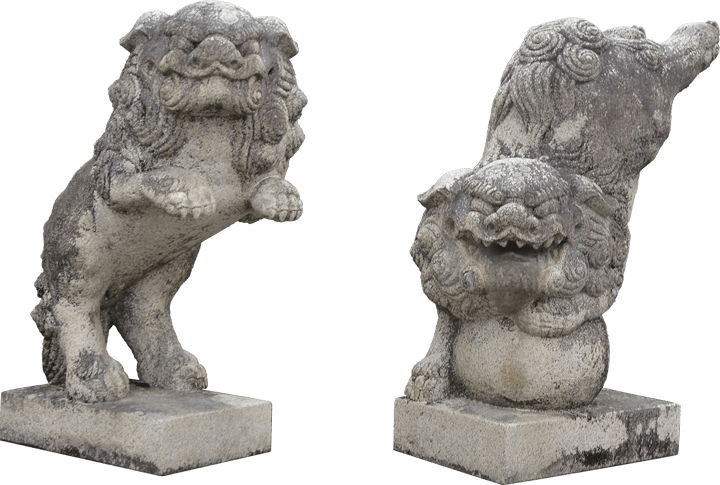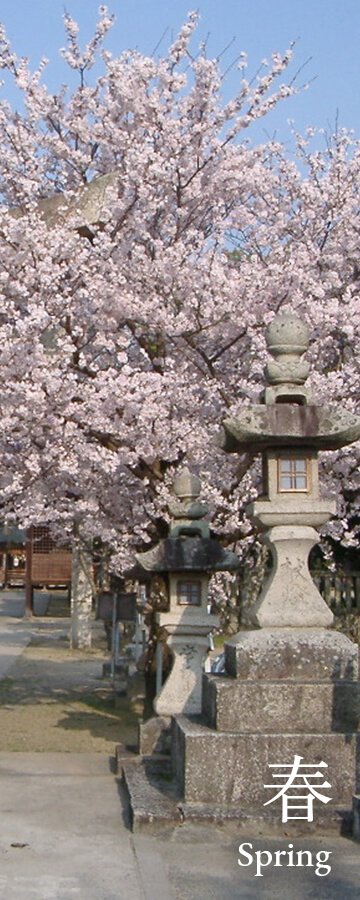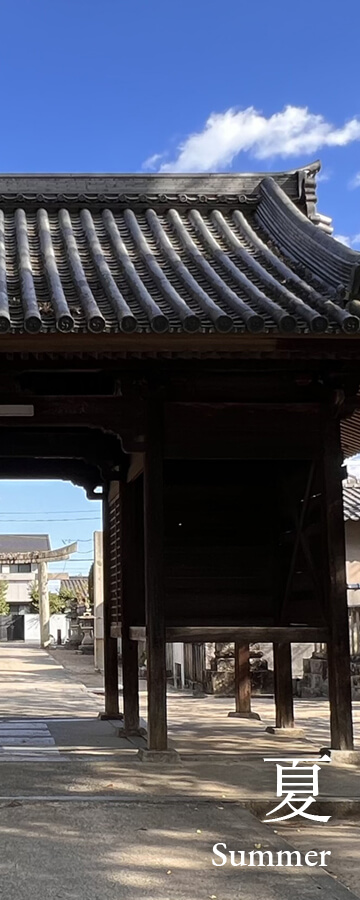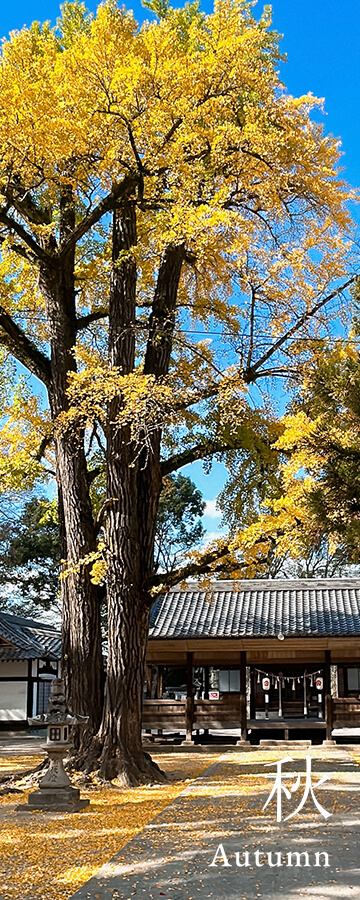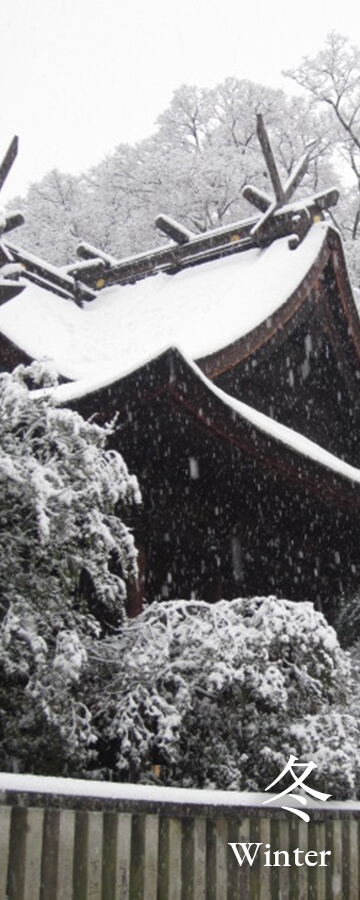境内案内Guide
城門Jomon
神社に城門?
城を支配していた有地氏の甥が
天王寺(素盞嗚神社)の僧侶であったことから当神社に移築されました。
山城廃止令により、相方城の門2棟と櫓1棟が伝えられていますが、
櫓は1970年代に近隣の火災により消失しました。
城門に関する資料が無いので建築年代は確定できませんが、
建築様式と部材の風化状態から16世紀末から17世紀初と推定されます。
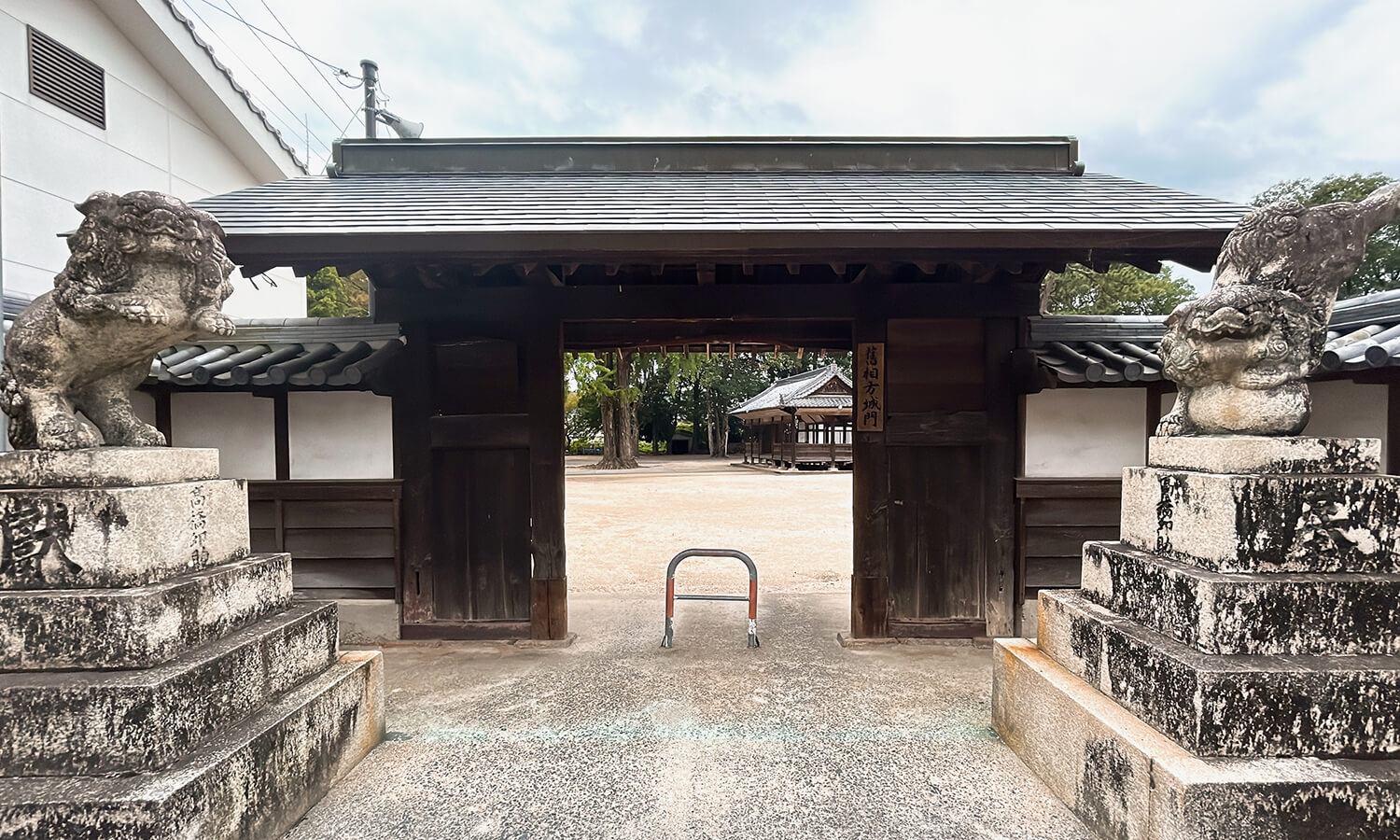 相方城門
相方城門
豊臣秀吉の山城禁止令により移築されました。
三間一戸の切妻造の薬医門、装飾の少ない簡素な門。

山城禁止令により移築、改築。

焼失した櫓の懸魚。

立ちあがり、尻あがりで縁起の良い狛犬。
天満宮Tenmangu
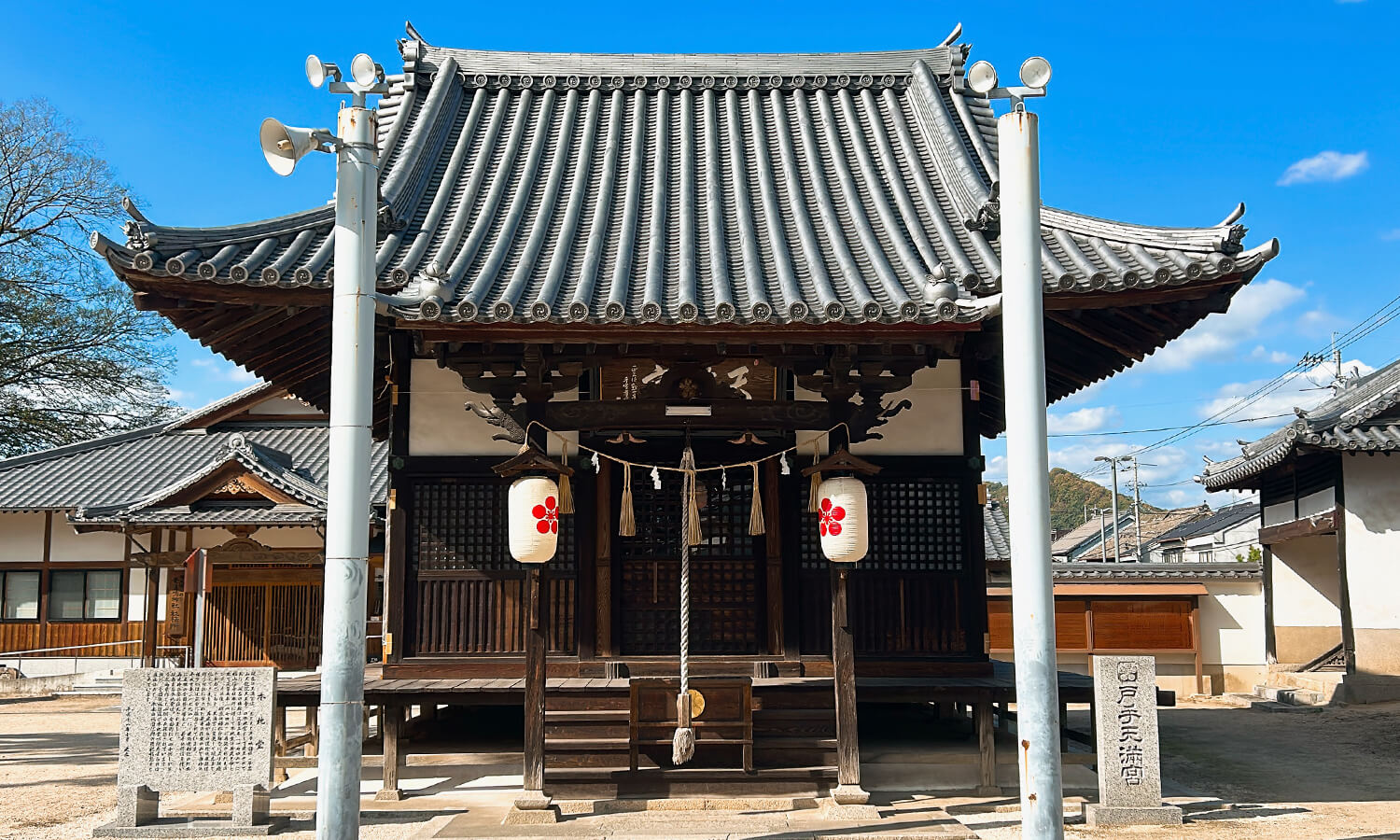 福山市文化財
福山市文化財
御祭神は学問の神様「菅原道真公」
現在の天満宮は、もともと戸手祇園社(早苗山天竜院天王寺)の本地堂として建立されており、現在の社殿は延享3年(1746)に福山藩寺社奉行に対して本地堂の再建を申し出、延享5年(1748)の再建されたものです。
その後、明治の廃仏毀釈により取り壊されるところを、天満宮に変更して現在まで伝えてきました。
再建時からの改修の痕跡は、明治初期の廃仏毀釈の際になされた若干の改変のみで、当時の様子がほぼ完全に保存されています。
平成10年(1998)に建物老朽化のために屋根の全面葺き替えと若干の修復を行い再建時の姿に復元されました。
本地堂とは
日本の神は仏が姿を変えて現れたものである」とする本地垂迹説に基づいて、神社にその神の本来の姿とされる本地仏(薬師如来)を祭っていたことを示すものです。
明治時代始めの神仏分離政策によって、その多くは姿を消していきましたが、この本地堂は、それ以前の神社の構成を示す遺構です。。
本地垂迹説とは
神様の本地は仏様であり、人びとを救うために仏様が神様に姿を変えているという考え方です。
神仏習合思想の発展とともに生まれた本地垂迹説は、平安時代の中頃から始まります。
Tenmangu
Tenmangu is a general term for shrines dedicated to Sugawara no Michizane (845-903), a scholar-statesman who was exiled on false charges to Dazaifu in Kyushu, where he died unpardoned. Kyoto, the capital, suffered repeated storms and earthquakes after his death. These were interpreted as acts perpetrated by the vengeful ghost of Michizane, and he soon came to be associated with Tenjin, a god of heaven. The term “tenman” literally means heaven filling and was used in combination with Tenjin as an appellation for Michizane, who was now deified. His vengeful aspect was soon forgotten, and by the end of the Heian Period (794-1185) he had come to be honored as the god of literature. Several centuries later he was also regarded as the god of calligraphy. Tenmangu are found throughout the country. The Tenmangu shrine in the compound of Susano’o Shrine was formerly a honjido (Buddhist hall). Before the Meiji government issued a decree to force Shinto shrines to separate Shinto and Buddhism in order to reinforce the Shinto-based divine status of the emperor, Seikannon guarded by Bishamonten and Fudomyo’o, were enshrined in the honjido. From around the 10th Century the theory that the native Shinto deities (kami) are Japanese incarnations or manifestations of Indian Buddhist divinities, which are their original and eternal prototypes, became popular. Buddhist temples were found in the compound of Shinto shrines because it was believed that in Japan Buddhas and bodhisattvas manifested themselves in the form of Shinto deities in order to deliver the Japanese people from their suffering and ignorance. Until the beginning of the Meiji Period, within the compound of many shrines throughout Japan Shinto deities were enshrined in the main shrine (honden) and the original Buddhist divinities were enshrined in the honjido. Having both of them in the shrine compound was a form of Gionsha. The honjido at Susano’o Shrine in Shin-chi, Hiroshima Prefecture is the only remaining honjido among shrines dedicated to Susano’o no Mikoto.
蘇民神社・疱瘡神社Sominjinja
Hosojinja

蘇民神社の御祭神は「蘇民将来」
疱瘡神社の御祭神は「比比羅木其花麻豆美神」
蘇民神社
備後風土記に(ふどき)の逸文によれば「昔、北海に坐す武塔神が南海の神女のもとに行かれる途中、日が暮れ一夜の宿を求めて此の地で富み栄えていた弟の巨旦将来の所へ行ったが断られ、貧しかった兄の蘇民将来は快く宿をお貸しした。年を経て、命は八人の王子をつれて還られた時、蘇民将来の家に立ち寄られ「吾は速須佐能神(すさのおのかみ)なり、後の世に疫病あらば、汝は蘇民将来の子孫と云いて、茅の輪を以って腰に着けたる人は免れるであろう」といわれ、巨旦を誅滅された伝説が残っている。
これが今日伝わっている茅の輪くぐりの神事の起こりである。
この伝説は遠く青森県、岩手県にまで伝わり、ほぼ全国に茅の輪くぐりの神事が執り行われ、「蘇民将来子孫ノ家」と書かれたお札が出されているようである。
疱瘡神社
創建不詳なれど疫病の流行った時に祀られたものと考えられる。


